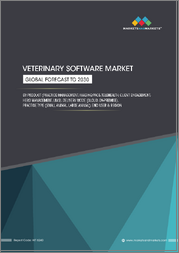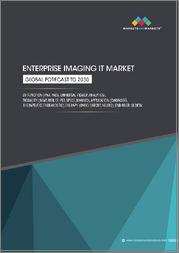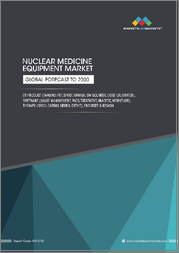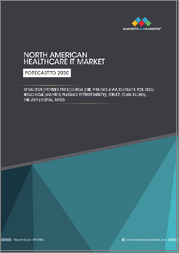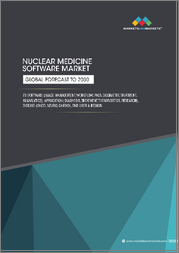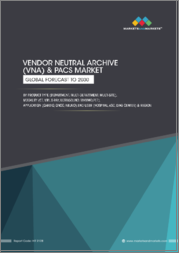
|
시장보고서
상품코드
1750340
특수 PACS 시장 : 시장 기회, 성장 촉진요인, 산업 동향 분석, 예측(2025-2034년)Specialty PACS Market Opportunity, Growth Drivers, Industry Trend Analysis, and Forecast 2025 - 2034 |
||||||
세계의 특수 PACS 시장은 2024년 34억 달러로 평가되었고, CAGR 5.6%로 성장할 전망이며, 2034년에는 57억 달러에 이를 것으로 추정됩니다.
이 성장은 화상 기술의 급속한 진보, 특히 인공지능 및 머신러닝의 PACS 시스템에 대한 통합이 주요 요인입니다. 이러한 기술은 화상 해석을 합리화해, 진단 정밀도를 향상시켜, 반복 작업을 자동화하는 것으로 헬스케어 전문가의 작업 부담을 대폭 경감합니다. 그 결과 임상 워크플로우는 보다 효율적이 되었고, 의료 시설이 환자 케어 제공을 강화하는 데 도움이 되고 있습니다.

시장 확대의 또 다른 중요한 요인은 클라우드 기반 PACS 플랫폼으로의 이동이 진행되고 있다는 점입니다. 클라우드 도입으로 원활한 원격 액세스, IT 인프라 비용 절감, 확장성 향상, 거점 간 화상 공유의 편리성이 향상됩니다. 이러한 이점은 진단 센터, 외래 환자 시설, 헬스케어 네트워크에 특히 가치가 있습니다. 게다가 의료 IT에 대한 관민 분야의 계속적인 투자는 PACS의 도입을 더욱 가속화시키고 있습니다. 특히, 전자 진료기록카드의 통합과 상호 운용성을 추진하는 이니셔티브는, 헬스케어 조직에 종래의 화상 시스템에서 디지털 솔루션으로의 이행을 재촉하고 있습니다. 이 진화에 의해, 보다 접속된 효율적인 진단 환경이 형성되고 있습니다.
| 시장 범위 | |
|---|---|
| 시작 연도 | 2024년 |
| 예측 연도 | 2025-2034년 |
| 시작 금액 | 34억 달러 |
| 예측 금액 | 57억 달러 |
| CAGR | 5.6% |
특수 PACS(Picture Archiving and Communication Systems)는 순환기과, 정형외과, 피부과, 종양과 등 특정 임상 분야에 맞게 커스터마이징되어 있습니다. 이러한 플랫폼은 각 전문 분야의 요구를 충족시키기 위해 자체 진단 도구 및 워크플로우 최적화를 제공합니다. 그 결과 진단 정확도가 향상되고 진료과 간 원활한 연계가 지원됩니다. 시장을 유형별로 분류하면 심장병학 PACS, 방사선학 PACS, 정형외과학 PACS, 병리학 PACS, 종양학 PACS, 안과학 PACS, 신경학 PACS, 피부과학 PACS, 여성건강PACCS, 내시경학PACCS 및 기타 특수 PACS가 있습니다. 이러한 가운데 방사선학 PACS는 2024년에 12억 달러의 평가액으로 시장을 선도하고 있습니다.
방사선학 PACS는 X선, MRI, CT 스캔, 초음파 등의 모달리티 수요 증가로 병원, 진료소, 이미징 센터에서 널리 채용되고 있습니다. 이러한 시스템은 대량의 이미지 데이터를 정리하고 헬스케어 팀이 실시간으로 액세스할 수 있도록 하기 위해 필수적입니다. EHR 및 병원 정보 시스템 등 다른 임상 플랫폼과의 통합 기능은 데이터 정확도와 워크플로우 효율 향상을 지원합니다. 원격 진료의 증가나 헬스케어의 디지털 변혁도, 특히 규제가 디지털화를 계속 촉진하고 있는 것으로부터, 방사선 PACS의 수요를 강화하고 있습니다.
컴포넌트별로 볼 때, 시장은 소프트웨어, 하드웨어, 서비스로 구분됩니다. 2024년 점유율은 소프트웨어가 44.2%로 시장을 선도했습니다. 이 우위성은 의료 화상 데이터를 전문 분야 횡단적으로 관리 및 전달하는 데 있어서 소프트웨어가 완수하는 중요한 역할에 기인하고 있습니다. 디지털 헬스케어 시스템의 급증으로 워크플로우를 최적화하고 진단 능력을 강화하는 선진적인 PACS 소프트웨어 솔루션에 대한 수요가 높아지고 있습니다. 클라우드 기반 플랫폼과 AI를 활용한 영상 분석 등 혁신이 이 부문을 더욱 추진해 의료 제공자에게 유연성, 자동화, 의사결정 도구 개선을 제공하고 있습니다.
전개 모델의 경우 특수 PACS 시장은 온프레미스 솔루션과 웹 및 클라우드 솔루션으로 분류됩니다. 온프레미스형 부문은 예측 기간 동안 CAGR 5.3%로 성장할 것으로 예측되고 있습니다. 이 모델은 데이터 프라이버시, 보안, 시스템 성능 관리를 강화하고 싶은 헬스케어 조직에 매력적입니다. 또한 온프레미스 솔루션은 특히 기밀성이 높은 환자 데이터를 대량으로 취급하는 시설에 있어서는, 보다 뛰어난 커스터마이징과 규제 준수를 가능하게 합니다. 게다가 전임 IT팀을 가지는 노포 병원에서는, 기존의 인프라 투자에 의해, 장기적으로는 이러한 시스템이 비용 효율이 뛰어난 경우가 많습니다.
최종 사용자 구분에는 병원 및 클리닉, 외래수술센터(ASC), 화상 진단센터, 기타 헬스 케어 시설이 포함됩니다. 병원 및 진료소는 2024년에 시장을 석권했으며, 2034년에는 31억 달러에 이를 것으로 예측되고 있습니다. 이들 시설은 일반적으로 여러 부서를 운영하고 있으며, 이미지 공유를 합리화하고 학제 간 연계를 강화하기 위해 효율적인 PACS 통합에 의존하고 있습니다. 만성 질환의 증가, 고령화, 입원 환자수의 증가에 의해, 이러한 환경에서는 신뢰성이 높은 화상 솔루션의 필요성이 높아지고 있습니다. 그 결과 병원은 시의적절하고 정확한 진단을 보장하기 위해 특수한 PACS 기술에 많은 투자를 하고 있습니다.
지역별로는 북미가 2024년 38.7%로 세계 특수 PACS 시장의 최대 점유율을 차지했으며, 2034년까지 연평균 복합 성장률(CAGR) 5.4%를 보일 것으로 예측됩니다. 미국은 2024년에 이 점유율 중 12억 달러를 차지했으며 지난 몇 년 동안 꾸준한 성장 궤도를 보여주고 있습니다. 이 성장의 주된 요인은 화상 처리 인프라에 대한 지속적인 투자와 헬스케어의 디지털화에 중점을 두고 있는 것입니다. 공급자가 기존 PACS 기능을 계속 강화하고 있기 때문에 이 지역은 의료 영상 분야에서의 기술 진보와 기술 혁신의 거점으로 계속 남아 있습니다.
경쟁 구도은 지속적인 제품 개발, 전략적 제휴, 세계 확장 노력으로 특징지어집니다. 주요 기업의 시장 점유율은 총 42%에 달하고 있으며, 강력한 제품 제공, 풍부한 업계 경험, 핵심 헬스케어 IT 시스템과의 통합 능력이 그 원동력이 되고 있습니다. 데이터의 정확성, 보안, 진단 효율에 대한 관심이 높아짐에 따라 경쟁은 심화되고 세계 특수 PACS 시장의 새로운 혁신과 통합이 촉진될 것으로 예상됩니다.
목차
제1장 조사 방법 및 범위
제2장 주요 요약
제3장 업계 인사이트
- 생태계 분석
- 업계에 미치는 영향요인
- 성장 촉진요인
- 화상 기기의 사용 증가
- 고령화 및 만성질환 증가
- 헬스케어 IT 솔루션의 도입을 촉진하기 위한 정부의 대처 강화
- 업계의 잠재적 위험 및 과제
- 높은 초기 도입 비용
- 데이터 보안 및 개인정보 보호에 대한 우려
- 성장 촉진요인
- 성장 가능성 분석
- 규제 상황
- 트럼프 정권의 관세에 대한 영향
- 무역에 미치는 영향
- 무역량의 혼란
- 보복 조치
- 업계에 미치는 영향
- 공급측의 영향(원재료)
- 주요 원재료의 가격 변동
- 공급망 재구성
- 생산 비용에 미치는 영향
- 수요측의 영향(판매가격)
- 최종 시장에 대한 가격 전달
- 시장 점유율 동향
- 소비자의 반응 패턴
- 공급측의 영향(원재료)
- 영향을 받는 주요 기업
- 전략적인 업계 대응
- 공급망 재구성
- 가격 설정 및 제품 전략
- 정책관여
- 전망 및 향후 검토 사항
- 무역에 미치는 영향
- 기술의 상황
- 장래 시장 동향
- Porter's Five Forces 분석
- PESTEL 분석
제4장 경쟁 구도
- 서문
- 기업 매트릭스 분석
- 주요 시장 기업의 경쟁 분석
- 경쟁 포지셔닝 매트릭스
- 전략 대시보드
제5장 시장 추계 및 예측 : 유형별(2021-2034년)
- 주요 동향
- 방사선과 PACS
- 심장병학 PACS
- 병리학 PACS
- 안과 PACS
- 정형외과 PACS
- 종양학 PACS
- 여성의 건강에 관한 PACS
- 피부과 PACS
- 신경학 PACS
- 내시경 PACS
- 기타 특수 PACS
제6장 시장 추계 및 예측 : 컴포넌트별(2021-2034년)
- 주요 동향
- 소프트웨어
- 하드웨어
- 서비스
제7장 시장 추계 및 예측 : 전개 모델별(2021-2034년)
- 주요 동향
- 온프레미스
- 웹 및 클라우드 기반
제8장 시장 추계 및 예측 : 최종 용도별(2021-2034년)
- 주요 동향
- 병원 및 진료소
- 화상 진단센터
- 외래수술센터(ASC)
- 기타 용도
제9장 시장 추계 및 예측 : 지역별(2021-2034년)
- 주요 동향
- 북미
- 미국
- 캐나다
- 유럽
- 독일
- 영국
- 프랑스
- 스페인
- 이탈리아
- 네덜란드
- 아시아태평양
- 중국
- 일본
- 인도
- 호주
- 한국
- 라틴아메리카
- 브라질
- 멕시코
- 아르헨티나
- 중동 및 아프리카
- 남아프리카
- 사우디아라비아
- 아랍에미리트(UAE)
제10장 기업 프로파일
- Agfa Healthcare
- Canon
- Carestream Health
- EyePACS
- Fujifilm Holdings Corporation(Fujifilm Medical Systems)
- IBM Corporation
- INFINITT Healthcare
- Intelerad Medical Systems
- McKesson Corporation
- Novarad
- Philips Healthcare
- Sectra
- Siemens
- Sonomed Escalon
- Topcon Corporation
- Visbion
The Global Specialty PACS Market was valued at USD 3.4 billion in 2024 and is estimated to grow at a CAGR of 5.6% to reach USD 5.7 billion by 2034. This growth is largely driven by rapid advancements in imaging technologies, particularly the integration of artificial intelligence and machine learning into PACS systems. These technologies streamline image analysis, improving diagnostic precision and significantly easing the workload of healthcare professionals by automating repetitive tasks. As a result, clinical workflows are becoming more efficient, helping medical facilities enhance patient care delivery.
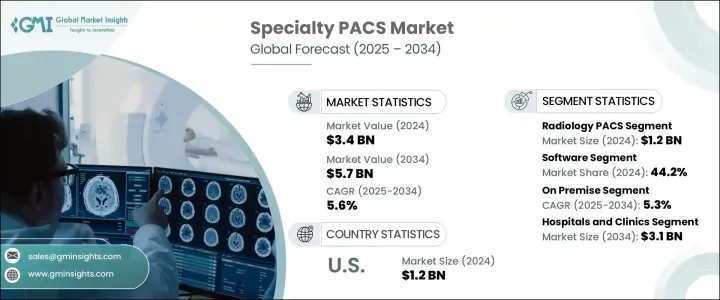
Another crucial factor contributing to market expansion is the growing shift toward cloud-based PACS platforms. Cloud deployment allows for seamless remote access, reduced IT infrastructure costs, greater scalability, and more convenient image sharing across locations. These advantages are particularly valuable to diagnostic centers, outpatient facilities, and healthcare networks. Additionally, ongoing public and private sector investments in health IT are further accelerating PACS adoption. In particular, initiatives promoting the integration and interoperability of electronic health records are encouraging healthcare organizations to transition from traditional imaging systems to digital solutions. This evolution is shaping a more connected and efficient diagnostic environment.
| Market Scope | |
|---|---|
| Start Year | 2024 |
| Forecast Year | 2025-2034 |
| Start Value | $3.4 Billion |
| Forecast Value | $5.7 Billion |
| CAGR | 5.6% |
Specialty PACS (Picture Archiving and Communication Systems) are tailored for specific clinical fields such as cardiology, orthopedics, dermatology, oncology, and others. These platforms deliver unique diagnostic tools and workflow optimizations to meet the demands of each specialty. As a result, they enhance diagnostic accuracy and support smooth collaboration between departments. The market segmentation by type includes cardiology PACS, radiology PACS, orthopedics PACS, pathology PACS, oncology PACS, ophthalmology PACS, neurology PACS, dermatology PACS, women's health PACS, endoscopy PACS, and other specialty PACS. Among these, radiology PACS led the market with a valuation of USD 1.2 billion in 2024.
Radiology PACS is seeing widespread adoption in hospitals, clinics, and imaging centers due to the increased demand for modalities like X-rays, MRIs, CT scans, and ultrasounds. These systems are critical for organizing large volumes of imaging data and facilitating real-time access for healthcare teams. Their ability to integrate with other clinical platforms, such as EHRs and hospital information systems, supports improved data accuracy and workflow efficiency. The rise of remote care and the digital transformation of healthcare is also strengthening the demand for radiology PACS, especially as regulations continue to promote digitization.
By component, the market is segmented into software, hardware, and services. Software led the market with a 44.2% share in 2024. This dominance stems from the essential role software plays in managing and distributing medical imaging data across specialties. The surge in digital healthcare systems has increased the demand for advanced PACS software solutions that optimize workflows and enhance diagnostic capabilities. Innovations such as cloud-based platforms and AI-powered image analysis are further propelling this segment, offering flexibility, automation, and improved decision-making tools to healthcare providers.
Regarding deployment models, the specialty PACS market is classified into on-premise and web/cloud-based solutions. The on-premise segment is expected to grow at a CAGR of 5.3% over the forecast period. This model appeals to healthcare organizations seeking greater control over data privacy, security, and system performance. On-premise solutions also allow for better customization and regulatory compliance, particularly for facilities handling high volumes of sensitive patient data. Moreover, established hospitals with dedicated IT teams often find these systems more cost-effective in the long term due to existing infrastructure investments.
The end-user segmentation includes hospitals and clinics, ambulatory surgical centers, diagnostic imaging centers, and other healthcare facilities. Hospitals and clinics dominated the market in 2024 and are anticipated to reach USD 3.1 billion by 2034. These institutions typically operate multiple departments that depend on efficient PACS integration to streamline image sharing and enhance interdisciplinary collaboration. The rise in chronic conditions, the aging population, and increasing inpatient volumes have heightened the need for reliable imaging solutions in these settings. Consequently, hospitals are investing heavily in specialized PACS technologies to ensure timely and accurate diagnostics.
Regionally, North America held the largest share of the global specialty PACS market at 38.7% in 2024 and is forecasted to grow at a CAGR of 5.4% through 2034. The US accounted for USD 1.2 billion of this share in 2024, showing a steady growth trajectory over the past few years. This growth is primarily attributed to consistent investment in imaging infrastructure and a strong emphasis on healthcare digitization. As providers continue enhancing their existing PACS capabilities, the region remains a hub for technological advancement and innovation in the medical imaging field.
The competitive landscape is marked by continuous product development, strategic collaborations, and global expansion efforts. Key players hold a combined 42% market share, driven by their robust product offerings, extensive industry experience, and integration capabilities with core healthcare IT systems. As the focus on data accuracy, security, and diagnostic efficiency increases, competition is expected to intensify, encouraging further innovation and consolidation across the global specialty PACS market.
Table of Contents
Chapter 1 Methodology and Scope
- 1.1 Market scope and definitions
- 1.2 Research design
- 1.2.1 Research approach
- 1.2.2 Data collection methods
- 1.3 Base estimates and calculations
- 1.3.1 Base year calculation
- 1.3.2 Key trends for market estimation
- 1.4 Forecast model
- 1.5 Primary research and validation
- 1.5.1 Primary sources
- 1.5.2 Data mining sources
Chapter 2 Executive Summary
- 2.1 Industry 3600 synopsis
Chapter 3 Industry Insights
- 3.1 Industry ecosystem analysis
- 3.2 Industry impact forces
- 3.2.1 Growth drivers
- 3.2.1.1 Growing use of imaging devices
- 3.2.1.2 Increasing aging population and prevalence of chronic diseases
- 3.2.1.3 Increasing government efforts to promote the adoption of healthcare IT solutions
- 3.2.2 Industry pitfalls and challenges
- 3.2.2.1 High initial implementation costs
- 3.2.2.2 Data security and privacy concerns
- 3.2.1 Growth drivers
- 3.3 Growth potential analysis
- 3.4 Regulatory landscape
- 3.5 Trump administration tariffs
- 3.5.1 Impact on trade
- 3.5.1.1 Trade volume disruptions
- 3.5.1.2 Retaliatory measures
- 3.5.2 Impact on the industry
- 3.5.2.1 Supply-side impact (raw materials)
- 3.5.2.1.1 Price volatility in key materials
- 3.5.2.1.2 Supply chain restructuring
- 3.5.2.1.3 Production cost implications
- 3.5.2.2 Demand-side impact (selling price)
- 3.5.2.2.1 Price transmission to end markets
- 3.5.2.2.2 Market share dynamics
- 3.5.2.2.3 Consumer response patterns
- 3.5.2.1 Supply-side impact (raw materials)
- 3.5.3 Key companies impacted
- 3.5.4 Strategic industry responses
- 3.5.4.1 Supply chain reconfiguration
- 3.5.4.2 Pricing and product strategies
- 3.5.4.3 Policy engagement
- 3.5.5 Outlook and future considerations
- 3.5.1 Impact on trade
- 3.6 Technology landscape
- 3.7 Future market trends
- 3.8 Porter's analysis
- 3.9 PESTEL analysis
Chapter 4 Competitive Landscape, 2024
- 4.1 Introduction
- 4.2 Company matrix analysis
- 4.3 Competitive analysis of major market players
- 4.4 Competitive positioning matrix
- 4.5 Strategy dashboard
Chapter 5 Market Estimates and Forecast, By Type, 2021-2034 ($ Mn)
- 5.1 Key trends
- 5.2 Radiology PACS
- 5.3 Cardiology PACS
- 5.4 Pathology PACS
- 5.5 Ophthalmology PACS
- 5.6 Orthopedics PACS
- 5.7 Oncology PACS
- 5.8 Women’s health PACS
- 5.9 Dermatology PACS
- 5.10 Neurology PACS
- 5.11 Endoscopy PACS
- 5.12 Other specialty PACS
Chapter 6 Market Estimates and Forecast, By Component, 2021-2034 ($ Mn)
- 6.1 Key trends
- 6.2 Software
- 6.3 Hardware
- 6.4 Services
Chapter 7 Market Estimates and Forecast, By Deployment Model, 2021-2034 ($ Mn)
- 7.1 Key trends
- 7.2 On premise
- 7.3 Web/cloud based
Chapter 8 Market Estimates and Forecast, By End Use, 2021-2034 ($ Mn)
- 8.1 Key trends
- 8.2 Hospitals and clinics
- 8.3 Diagnostic imaging centers
- 8.4 Ambulatory surgical centers
- 8.5 Other end use
Chapter 9 Market Estimates and Forecast, By Region, 2021-2034 ($ Mn)
- 9.1 Key trends
- 9.2 North America
- 9.2.1 U.S.
- 9.2.2 Canada
- 9.3 Europe
- 9.3.1 Germany
- 9.3.2 UK
- 9.3.3 France
- 9.3.4 Spain
- 9.3.5 Italy
- 9.3.6 Netherlands
- 9.4 Asia Pacific
- 9.4.1 China
- 9.4.2 Japan
- 9.4.3 India
- 9.4.4 Australia
- 9.4.5 South Korea
- 9.5 Latin America
- 9.5.1 Brazil
- 9.5.2 Mexico
- 9.5.3 Argentina
- 9.6 Middle East and Africa
- 9.6.1 South Africa
- 9.6.2 Saudi Arabia
- 9.6.3 UAE
Chapter 10 Company Profiles
- 10.1 Agfa Healthcare
- 10.2 Canon
- 10.3 Carestream Health
- 10.4 EyePACS
- 10.5 Fujifilm Holdings Corporation (Fujifilm Medical Systems)
- 10.6 IBM Corporation
- 10.7 INFINITT Healthcare
- 10.8 Intelerad Medical Systems
- 10.9 McKesson Corporation
- 10.10 Novarad
- 10.11 Philips Healthcare
- 10.12 Sectra
- 10.13 Siemens
- 10.14 Sonomed Escalon
- 10.15 Topcon Corporation
- 10.16 Visbion






